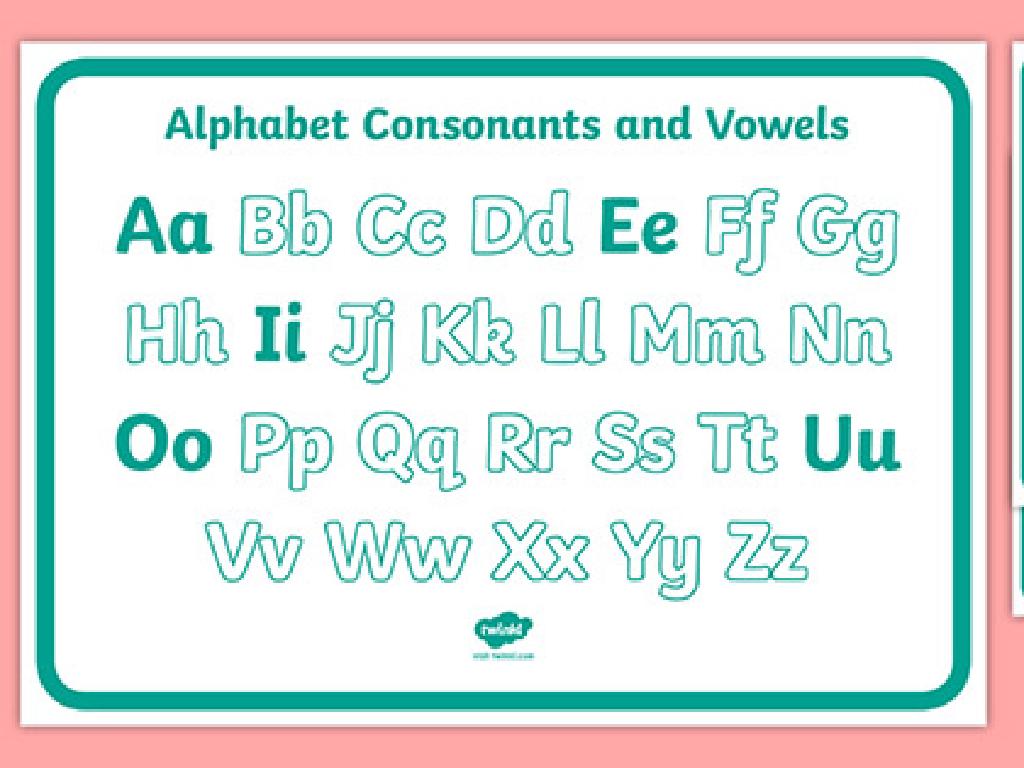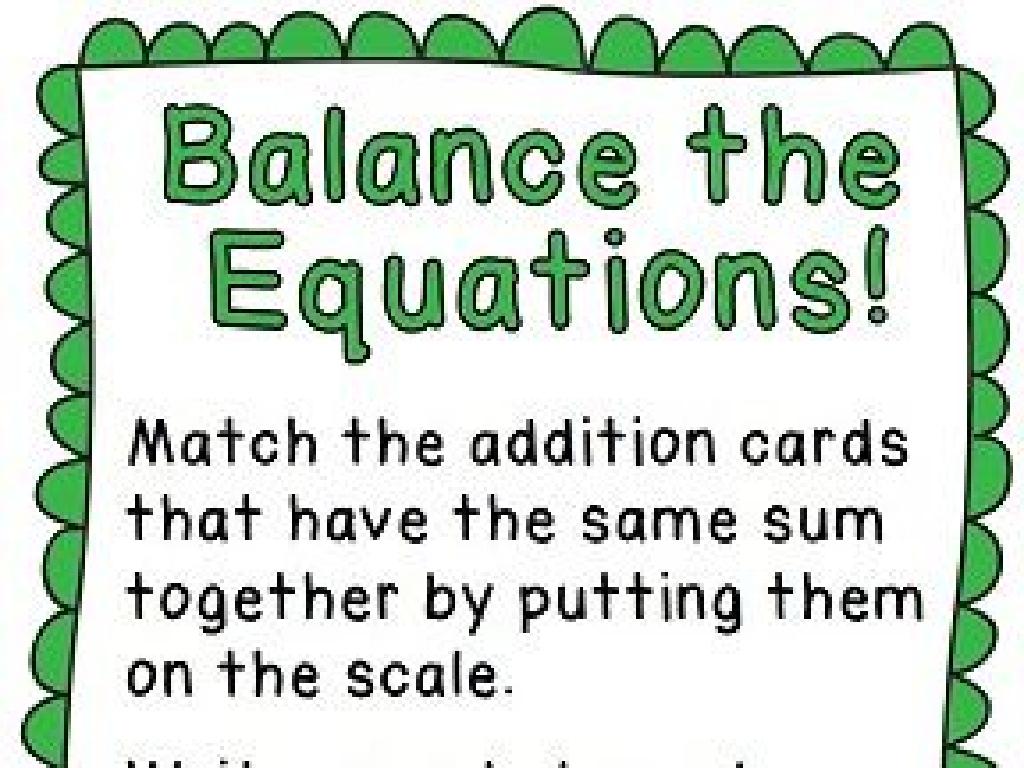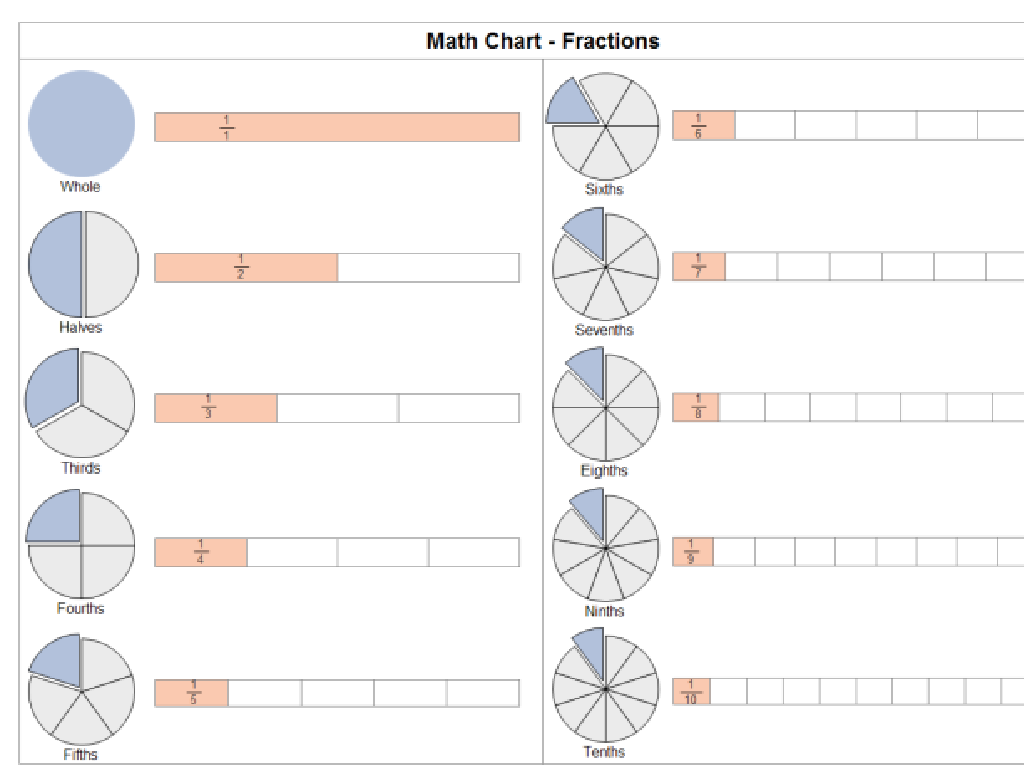Budgeting And Saving
Subject: Life skills
Grade: High school
Topic: Financial Literacy
Please LOG IN to download the presentation. Access is available to registered users only.
View More Content
Introduction to Financial Literacy: Budgeting & Saving
– What is Financial Literacy?
– Importance of Financial Literacy
– Essential for making informed money decisions
– Budgeting: Planning your spending
– Helps track income and expenses to avoid debt
– Saving: Preparing for the future
– Enables setting aside money for emergencies and goals
|
This slide introduces students to the concept of financial literacy, emphasizing its importance in everyday life and future planning. Financial literacy is the ability to understand and effectively use various financial skills, including personal financial management, budgeting, and investing. It’s crucial for students to grasp why being financially literate can lead to a more secure and prosperous future. The slide also sets the stage for the day’s focus on budgeting and saving, two pillars of financial stability. Budgeting is about creating a plan for where your money will go, ensuring your expenses do not exceed your income. Saving is about setting money aside for future needs or emergencies. Encourage students to think about their own spending habits and the importance of planning for financial goals.
Understanding Budgets in Financial Literacy
– Define a budget
A budget is a plan for income and expenditure over a period.
– Importance of budgeting
Budgeting helps track spending, save money, and reach financial goals.
– Types of budgets
Personal budgets for individuals, family budgets for households, and business budgets for companies.
– Budgeting’s role in finance
|
This slide introduces the concept of a budget and its significance in financial management for individuals, families, and businesses. A budget is essentially a financial plan that helps to ensure spending does not exceed income. It’s a crucial tool for achieving short-term and long-term financial objectives, such as saving for college, a car, or retirement. Different types of budgets cater to various needs and entities, highlighting the versatility and necessity of budgeting in all aspects of life. Encourage students to think about their own spending habits and how a personal budget could help them manage their finances more effectively.
Creating Your First Budget
– Identify income sources
– Include jobs, allowances, or gifts.
– List monthly expenses
– Include both fixed (rent) and variable (food) costs.
– Set financial goals
– Short-term (new phone) and long-term (college savings).
– Track and allocate funds
– Use apps or spreadsheets to monitor spending.
|
This slide is aimed at guiding high school students through the initial steps of creating a personal budget. Start by identifying all possible income sources, which may include part-time jobs, allowances, or monetary gifts. Next, list all monthly expenses, categorizing them as fixed (unchanging monthly bills) or variable (fluctuating costs like groceries or entertainment). Encourage students to set clear financial goals, both short-term (such as saving for a new gadget) and long-term (like setting aside money for college). Lastly, emphasize the importance of regularly tracking expenses and allocating funds to ensure they are staying within their budget and progressing towards their financial goals. Provide examples of budgeting tools such as mobile apps or simple spreadsheets that can help in this process.
The Art of Saving: Building Your Future
– Understanding the importance of saving
– Saving provides financial security and freedom.
– Distinguishing short-term and long-term savings
– Short-term may be for vacations, while long-term for retirement.
– Strategies for effective saving habits
– Automate savings, track expenses, and avoid debts.
– Setting realistic saving goals
– Goals should be specific, measurable, achievable, relevant, and time-bound.
|
This slide aims to educate high school students on the importance of saving money as a fundamental aspect of financial literacy. It’s crucial to explain that saving can offer a safety net for unexpected expenses and help achieve future financial goals. Differentiate between short-term savings for immediate or near-future needs, like buying a new phone, and long-term savings for significant future investments, such as college tuition or retirement. Offer practical tips like setting up automatic transfers to savings accounts, creating and sticking to a budget, and minimizing high-interest debt. Encourage students to set SMART (Specific, Measurable, Achievable, Relevant, Time-bound) goals to make their saving efforts more directed and effective. This slide should empower students to take control of their financial future through disciplined saving practices.
Budgeting and Saving Scenarios
– Case study: School event budgeting
– Plan and allocate funds for various aspects of a school event
– Scenario: Saving for college
– Set saving goals and understand investment options for education
– Group discussion on budget challenges
– Share personal experiences and solutions to common financial obstacles
– Strategies for effective budgeting
|
This slide aims to engage students in practical financial literacy through interactive scenarios and discussions. Begin with a case study where students create a budget for a school event, considering costs like venue, food, and entertainment. Then, move to a scenario that involves planning and saving for a college fund, discussing different saving strategies and investment options like 529 plans. Encourage a group discussion where students can talk about budgeting challenges they’ve faced or anticipate, sharing strategies to overcome them. This will help students understand the importance of budgeting and saving, and how to apply these skills in real-life situations. Provide examples of budgeting tools and apps that can aid in their financial planning.
Budgeting Tools and Resources
– Embrace tech for budget management
– Explore top budgeting apps
– Apps like Mint, YNAB (You Need A Budget), and EveryDollar help track expenses.
– Discover budgeting websites
– Websites such as NerdWallet and The Balance offer budgeting tips and tools.
– Other learning resources
– Read books like ‘The Total Money Makeover’, or enroll in financial literacy workshops.
|
This slide aims to introduce students to various tools and resources that can aid in budgeting and saving. Emphasize the importance of using technology to simplify and enhance budget management. Highlight recommended apps like Mint, which can connect to bank accounts to track spending, and YNAB, which focuses on giving every dollar a job. Mention websites that provide valuable information and interactive tools to help students stay on top of their finances. Additionally, point out that traditional resources like books and in-person courses are also valuable for deepening their understanding of financial literacy. Encourage students to explore these options and find what works best for their personal finance journey.
Class Activity: Budget Planning Workshop
– Divide into groups for budget creation
– Each group develops a mock budget
– Consider expenses like food, transport, and savings goals
– Present your budget and savings strategy
– Share the rationale behind your budget choices
– Vote on the best budget plan
– Think about feasibility and thoroughness
|
This interactive class activity is designed to engage students in the practical application of budgeting and saving concepts. Students will work in groups to create a mock budget based on a given scenario, which will include income and necessary expenses such as housing, utilities, food, transportation, and savings. Each group will then present their budget and savings plan to the class, explaining their decision-making process and how they prioritized different expenses. After all presentations, the class will vote on the most realistic and well-planned budget. This activity encourages collaboration, critical thinking, and practical financial planning skills. For the teacher: Provide a list of common expenses and income sources to guide the students, and offer examples of savings goals. Ensure that each group has a chance to present and that the voting process is conducted fairly.
Wrapping Up: Budgeting and Saving
– Recap budgeting principles
– Review: Needs vs. Wants, setting financial goals, and expense tracking
– Discuss saving strategies
– Saving tips: Pay yourself first, emergency funds, and long-term savings
– Q&A session
– Feedback on activities
– Reflect on budgeting activities and share what we’ve learned
|
As we conclude today’s lesson on budgeting and saving, let’s revisit the core principles of creating a budget, differentiating between needs and wants, and setting realistic financial goals. We’ll also recap the importance of tracking expenses to stay within budget. Moving on to saving strategies, we’ll discuss the ‘pay yourself first’ method, the significance of having an emergency fund, and planning for long-term savings goals. Open the floor for a Q&A session to address any uncertainties students may have. Finally, provide feedback on the class activities, emphasizing the key takeaways and how they can be applied in real-life scenarios. Encourage students to share their insights and what they’ve found most valuable about today’s lesson.






